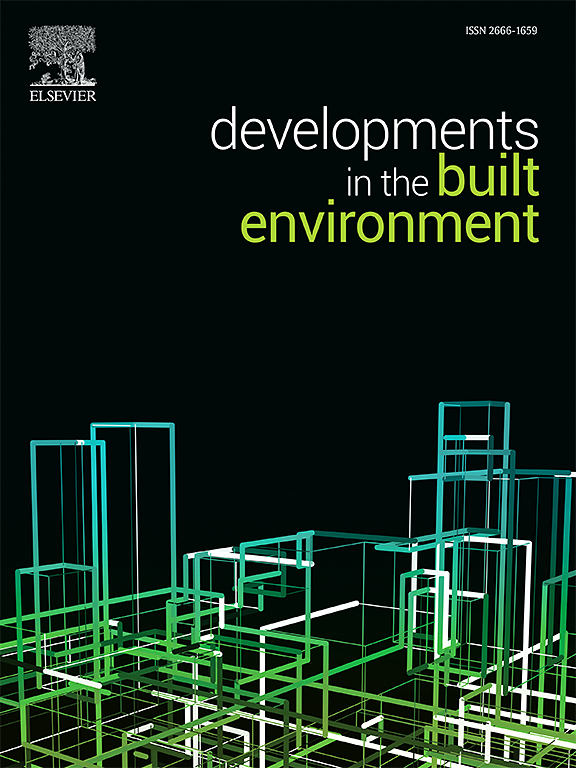Human-centric dynamic accessibility measurement for emergency evacuation: testing and modeling in remote village in China
IF 6.2
2区 工程技术
Q1 CONSTRUCTION & BUILDING TECHNOLOGY
引用次数: 0
Abstract
Emergency evacuation is a critical component of disaster management, particularly in high-altitude remote areas where limited infrastructure, complex terrain, and extreme environments significantly increase evacuation challenges. However, most existing studies focus on urban or low-altitude regions, with limited research on evacuation behavior in high-altitude settings. This study examines Jiangdong Village in Ruoergai County, Sichuan Province, using a human-centered dynamic accessibility measurement approach to assess the impact of high-altitude environments on evacuation efficiency through psychological-physiological data analysis. By analyzing evacuation data from 77 villagers, we constructed a multiple linear regression model (R2 = 0.846), which revealed a significant positive correlation between age and evacuation time (regression coefficient 0.93, P = 0.006). Younger participants exhibited better physiological adaptability (mean heart rate 106.07 bpm at 50s), whereas older individuals showed a slower heart rate response (mean heart rate 74.14 bpm at 50s) and delayed recovery. Psychological stress was also significantly correlated with evacuation time (correlation coefficient 0.64, P < 0.001), with high-stress individuals evacuating in 229.33s on average, compared to 142.89s for low-stress participants. The findings indicate that psychological stress and heart rate dynamics are key factors influencing evacuation efficiency. This study provides empirical insights for emergency management in high-altitude ethnic villages and proposes optimized evacuation strategies, including real-time physiological monitoring, enhanced psychological support, and tailored evacuation plans for different populations to improve disaster response in high-altitude regions.
以人为中心的应急疏散动态可达性度量:中国偏远村庄的测试与建模
紧急疏散是灾害管理的关键组成部分,特别是在基础设施有限、地形复杂和极端环境大大增加疏散挑战的高海拔偏远地区。然而,现有的研究大多集中在城市或低海拔地区,对高海拔地区疏散行为的研究有限。本研究以四川省若尔盖县江东村为研究对象,采用以人为中心的动态可达性测量方法,通过心理生理数据分析,评估高海拔环境对疏散效率的影响。通过分析77名村民的疏散数据,构建多元线性回归模型(R2 = 0.846),发现年龄与疏散时间呈正相关(回归系数0.93,P = 0.006)。年轻的参与者表现出更好的生理适应性(50岁时平均心率106.07 bpm),而老年人表现出更慢的心率反应(50岁时平均心率74.14 bpm)和延迟恢复。心理应激与疏散时间也显著相关(相关系数0.64,P <;0.001),压力大的人平均在229.33秒内撤离,而压力小的人平均在142.89秒内撤离。结果表明,心理应激和心率动态是影响疏散效率的关键因素。本研究为高海拔民族村寨的应急管理提供了实证见解,并针对不同人群提出了优化疏散策略,包括实时生理监测、加强心理支持、量身定制疏散方案等,以提高高海拔地区的灾害响应能力。
本文章由计算机程序翻译,如有差异,请以英文原文为准。
求助全文
约1分钟内获得全文
求助全文
来源期刊

Developments in the Built Environment
Multiple-
CiteScore
7.40
自引率
1.20%
发文量
31
审稿时长
22 days
期刊介绍:
Developments in the Built Environment (DIBE) is a recently established peer-reviewed gold open access journal, ensuring that all accepted articles are permanently and freely accessible. Focused on civil engineering and the built environment, DIBE publishes original papers and short communications. Encompassing topics such as construction materials and building sustainability, the journal adopts a holistic approach with the aim of benefiting the community.
 求助内容:
求助内容: 应助结果提醒方式:
应助结果提醒方式:


